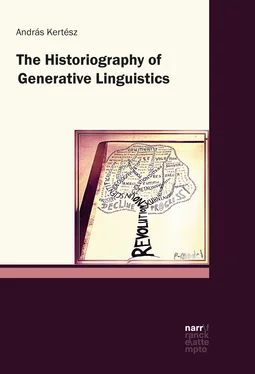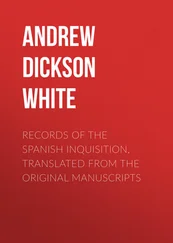We know that there was a Chomskyan revolution – but not because every linguist in the world was at one time, or is now, a generative grammarian. There was a Chomskyan revolution because anyone who hopes to win general acceptance for a new theorytheory of languagelanguage is obliged to show how the theory is better than ChomskyChomsky, Noam’s. Indeed, the perceived need to outdo Chomsky has led him to be the most attacked linguist in historyhistory (NewmeyerNewmeyer, Frederick J. 1986b: 8).
NewmeyerNewmeyer, Frederick J.’s third argument is that the number of ChomskyChomsky, Noam’s followers radically increased and these followers gained significant positions at an increasing rate. He maintains, however, that contrary to appearances, Chomsky and his followers did not have real influence, since:3
there are numerous opportunities for students at American universities to continue their studies within non-generative linguistics;
generative linguists receive only a modest amount of funding;
the Linguistic Society of America was not controlled by the generativists.4
In sum, NewmeyerNewmeyer, Frederick J. (1986b) offers the following solution to (P):
| (SP4) |
The basic terms of the historiographyhistoriography of generative linguistics with respect to Syntactic Structures Syntactic Structures are ›scientificscientific revolution‹revolutionscientific and ›research tradition‹researchtradition, its central hypothesis is (T4) and its framework is LaudanLaudan, Larry (1977). |
2.1.2 No revolution
2.1.2.1 Evolution
KoernerKoerner, E.F. Konrad (1995: 8) maintains that as a result of PercivalPercival, W. Keith’s (1976a) devastating arguments, the debate about the applicability of KuhnianKuhnian terms to linguistics became pointless. Modifying his earlier account which we summarized in section 2.1.1.1, and opposing NewmeyerNewmeyer, Frederick J.’s (1986b) view, in his later publications Koerner himself questions the revolutionaryrevolutionary nature of Syntactic Structures Syntactic Structures in the Kuhnian or in any other sense. He argues for the following thesis (Koerner 1989: 124, 2004: 51):
| (T5) |
The movement initiated by Syntactic Structures Syntactic Structures was not a revolution in any sense; rather, it was the evolutionevolution of the American linguistics of the 1950s. |
KoernerKoerner, E.F. Konrad (1989) argues for (T5) by scrutinizing those factors that, according to him, support his claim that generative linguistics could not have become as strong as it did by the 1960s if factors other than its intellectual innovations had not played a part in this process.
First, while making reference to MaherMaher, John Peter (1982), KoernerKoerner, E.F. Konrad points out that the impact of Syntactic Structures Syntactic Structures may have been influenced by fashion . However, he is not in full agreement with Maher, because in his opinion there were other relevant factors, too.
Second, the considerable amount of financial support which, in KoernerKoerner, E.F. Konrad’s view, ChomskyChomsky, Noam and his circle received, also contributed to the success of generative linguistics.1 Therefore, Koerner’s standpoint is the opposite of NewmeyerNewmeyer, Frederick J.’s (1986b) which we summarized in the previous section, claiming that Chomsky’s research projects only received a small amount of funding. Koerner (1989: 108) cites McCawleyMcCawley, James D.’s summary, according to which the peculiarities of American university administration favor situations where smaller groups increase the number of their followers through funding while their intellectual achievements do not justify this. Consequently, several universities in the 1950s and 1960s launched linguistics programs that could not have been funded solely on the basis of their intellectual credibility. Thus, according to Koerner, owing to the propaganda activity carried out by Chomsky and his adherents, administrative leaders – without expertise in linguistics – considered generative grammargrammar to be a modern science, one that was to be followed, and thus its representatives won university positions and research funds much more easily than those of other linguistic approaches. McCawley’s statement leads Koerner to conclude that the rapid growth of Chomsky’s influence could not be attributed exclusively to the content of Syntactic Structures Syntactic Structures , but »it may have had something to do with a fad«, too (Koerner 1989: 109, 2002: 161, 12).
Third, KoernerKoerner, E.F. Konrad (1989: 111) stresses that the representation of ChomskyChomsky, Noam’s initiative as a revolution is basically not rooted in the innovative nature of the content of Syntactic Structures Syntactic Structures but is of an ideologicalideology nature, stemming from the strong belief in its revolutionaryrevolutionary impact. This claim is in agreement with MurrayMurray, Stephen O. (1994); see also Section 2.1.2.6.1.
Fourth, according to KoernerKoerner, E.F. Konrad, the revolutionaryrevolutionary rhetoricrhetoric and the intensive propaganda activity that highlighted the radical, innovative nature of generative grammargrammar also played a role in the circumstance that ChomskyChomsky, Noam’s early work became known as revolutionary. This propaganda was related to the constant, aggressive, rude, and often ad hominemad hominem attacks against both the arguments and the representatives of neo-Bloomfieldian structuralismstructuralism. Koerner presents compelling examples of this (1989: 120–121). In this respect, Koerner seems to have similar views to those of MurrayMurray, Stephen O. (1994), HarrisHarris, Randy Allen (1993a, 1993b) and LakoffLakoff, Robin (1989), according to whom there was no scientific revolution in linguistics in the 1950s and 1960s. Rather, it was the application of revolutionary rhetoric that provided a false image of the impact of generative linguistics on the historyhistory of linguistics as a whole.2
Fifth, since the claims summarized in the previous paragraphs suggest that the above mentioned circumstances surrounding the appearance of Syntactic Structures Syntactic Structures – fashion, funding, ideologyideology, propaganda and fierce attacks – may have made it seem revolutionaryrevolutionary, KoernerKoerner, E.F. Konrad examines to what extent the views elaborated in the book were innovative in comparison to the findings of neo-Bloomfieldian structuralismstructuralism. He enumerates and analyses the factors which he claims prove that the appearance of Syntactic Structures – contrary to the propaganda surrounding it – did not represent a radical break with the latter. Rather, it was deeply rooted in the findings, methods and perspective of neo-Bloomfieldian structuralism, with special regard to the impact HockettHockett, Charles F. and Zellig S. HarrisHarris, Zellig S. directly had on the linguistic theorytheory and methodologymethodology put forward in Syntactic Structures .3 Therefore, transformationaltransformation generative grammargrammar »is basically post-Saussurean structuralism« (Koerner 1989: 110, 2002: 163, 2004: 15). As such, it is the result of the evolutionevolution of American linguistics, after World War II and is devoid of any revolutionary breaks.4
Sixth, KoernerKoerner, E.F. Konrad claims that from the sixties onwards the proponents of generativism strove to rewrite the historyhistory of linguistics in accordance with their interests.5 Let us illustrate this with two examples.6 As a first example, we mention ChomskyChomsky, Noam’s Cartesian Linguistics (1966). In Koerner’s (1989: 102, 131; 2004: 37–40) opinion, Chomsky’s (1966) work is an instance of ›partisan historiographypartisan historiography‹ or ›Whig historyWhig history‹, implying that its aim is to represent the interests of the generative camp and to legitimizelegitimization generative linguistics.7 Koerner does not stand alone in such a view since Chomsky’s historiographicalhistoriography works were generally not taken seriously by historiographers, as they were considered ideologicalideology propaganda (TomalinTomalin, Marcus 2008: 6). For instance, Cartesian Linguistics (Chomsky 1966) is »not history but phantasy« (AarsleffAarsleff, Hans 1971: 11). Moreover, it
Читать дальше












